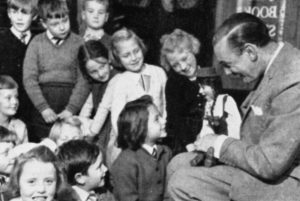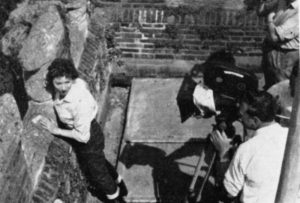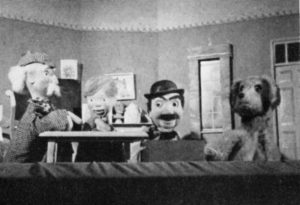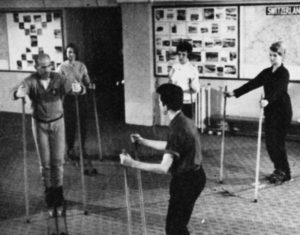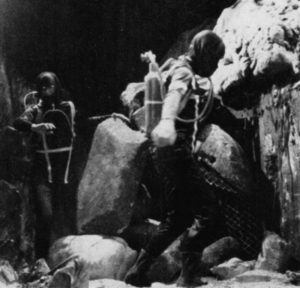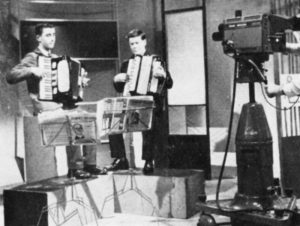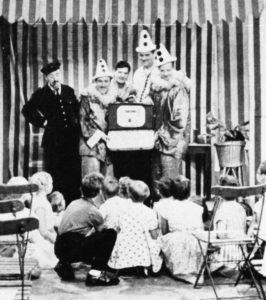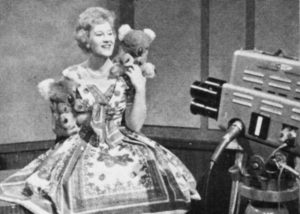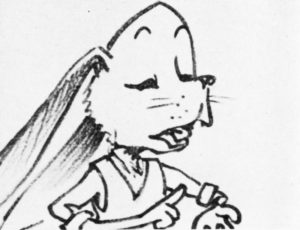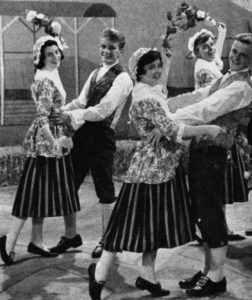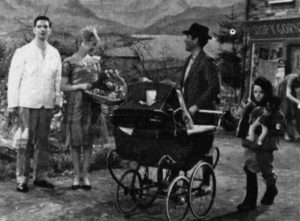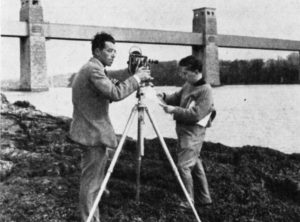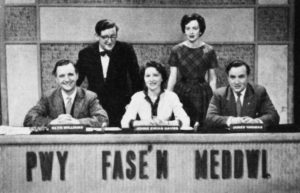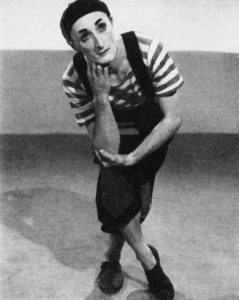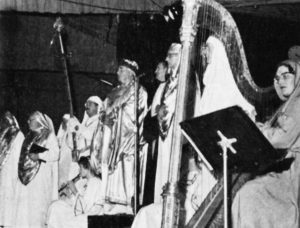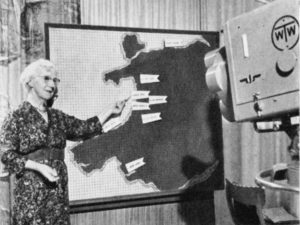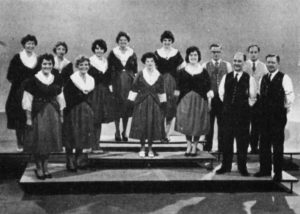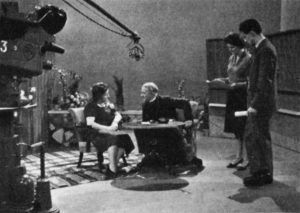
From the beginning of its transmissions Independent Television has catered for children. Specially produced and selected programmes are transmitted daily, of a type considered suitable to the taste of the young viewers. For his part the child has not been slow to declare his preference, and the correspondence files filled by forthright young viewers, of the lower age group in particular, make instructive reading. Instruct is precisely what these letters do, since they play their part in guiding the planners of the programmes, in this case the responsible directors of children’s productions in the individual companies.
Whereas eight years ago most children came fresh to television and naturally found it an enormous novelty, and therefore a magnet of tremendous power, they are now, many of them, born to it, and see it from their mothers’ arms as just one more piece in the jigsaw of their environment. There is a sense, therefore, in which the novelty has gone for ever, though the magnet undoubtedly remains. We may come to know some day, when research has determined the answer for us, precisely how, and at what age, and in what sense, the picture on the screen comes to have meaning for a child. In the meantime it would be an altogether delightful thing if we could claim that a child’s first experience of television was by way of the programmes specially designed for him. Failing this assurance, we can only hope that the picture on the screen which first makes itself intelligible to a child in terms which, within his experience, he can begin to comprehend, is the television of children’s programmes.
If this gradual and intelligible introduction to television on behalf of children could be achieved, no better start could be made than with Small Time, a short programme appearing from Monday to Friday between 4.45 p.m. and 5 p.m. on most stations of Independent Television. Here, daily, is projected the magic of make-believe in a world inhabited by the Innocents — puppets and cartoon characters and dolls in the eyes of the adult who looks in, but by a host of children called by name Pussy Cat Willum, Oily Owl, Joe Crow, Simon Scarecrow and Hoppitty and their adventurous friends. These characters are of the same family as Alice in Wonderland, and they are created and displayed on the screen by artists who have Lewis Carroll’s rare understanding of the fleeting innocence of the child’s environment, and his ability to paint it again and again for the children in colours both intelligible and intangible.
From 5 until 5.55 p.m., the first evening News time, from Monday to Friday the programme for children is roughly divided into two halves. The first half is given over to more instructive items, hobbies, sport, general knowledge games and animal care. These programmes are provided, in turn, by three of the main networking companies, Associated-Rediffusion (which is also responsible for Small Time), Associated Television and Granada. For the second part of the programme a story occupies the screen. This policy of providing a story as part of the plan for children’s television is maintained since it caters for the older child’s desire for make-believe of a more realistic kind than Small Time. This story time may feature a home-produced serial or one of the American homespuns built around children’s adventures in the countryside.
An exception to this general pattern has been made in these last eighteen months on every Tuesday, when Associated-Rediffusion have taken the whole of the period between 5 p.m. and the News for an instructional programme, with some approval from perhaps a minority of young viewers, many of whom take part in the competitions set. The lack of a story time on Tuesday tends, however, to be made up for on Saturday and Sunday, when ABC joins Associated Television in providing week-end fare. Stories on Saturdays and Sundays, which may include cartoons, incline to simple fiction which is aimed to entertain the family viewing together, and by way of more serious diversion a mildly instructive programme also appears from time to time.
The other programme companies offer variations to the networked pattern, and in some cases produce their own programmes which are in every case very popular.
The Television Act 1954 required the Authority to appoint a committee responsible to the Authority for the overall surveillance of programmes intended for children and young persons. Since 1956 the Children’s Advisory Committee has met regularly to fulfil this responsibility.
| THE CHILDREN’S ADVISORY COMMITTEE | |
|---|---|
| Sir John Wolfenden, CBE (Chairman) | |
| Mr B S Braithwaite | Mrs E Jarvis |
| Mrs R Collick | Dr H Stewart Macintosh, CBE |
| Miss D S Gilbert | Mr J L Mourton |
| The Rev Arthur H Gray | Mr H Oldman |
| Mrs H Halpin | Mrs G Seth |
| Miss Norah Isaac | |
| Programme | Description | Company | Mins. | Time & Day | Distribution |
|---|---|---|---|---|---|
| Birthday Club | Birthdays | WWN | 5 | 4.40 Mon.-Fri. | Local |
| Small Time | For young children | A-R | 15 | 4.45 Mon.-Fri. | Part Network |
| Seeing Sport | Sport instruction | ATV | 25 | 5.00 Monday | Network |
| Just the Job | Careers feature | Anglia | 30 | 5.25 Monday | Local |
| Animal Parade | Natural history | Granada | 15 | 5.40 Monday | Local |
| Tuesday Rendezvous | Magazine programme | A-R | 55 | 5.00 Tuesday | Part Network |
| Round-Up | Magazine programme | Scottish | 55 | 5.00 Tuesday | Local |
| Zoo Time | Visits to the zoo | Granada | 25 | 5.00 Wednesday | Network |
| Happy-Go-Lucky | Entertainment | Tyne Tees | 30 | 5.25 Wednesday | Local |
| Criss Cross Quiz | Quiz programme | Granada | 25 | 5.00 Thursday | Part Network |
| Full Marks | Inter-schools quiz | Southern | 30 | 5.25 Thursday | Local |
| Badger’s Bend | Country life series | A-R | 25 | 5.00 Friday | Network |
| Super car | Puppet series | ATV | 30 | 5.25 Friday | Part Network |
| The Junior Angle | Children’s magazine | Anglia | 30 | 5.25 Friday | Local |
| Lets See | Magazine | Border | 15 | 5.40 Friday | Local |
| Many Happy Returns | Birthdays | Border | 15 | 5.00 Saturday | Local |
| What Do I See | Sketching instruction | Southern | 15 | 5.00 Saturday | Local |
| Secret Beneath the Sea | Adventure serial | ABC | 30 | 5.15 Saturday | Part Network |
| Fireball XL5 | Puppet series | AT V | 15 | 4.50 Sunday | Part Network |
| Snip and Snap | Cartoon series | ABC | 15 | 5.05 Sunday | Local |
| Living with Animals | Animal care | Anglia | 20 | 5.20 Sunday | Local |
| Men of Action | Adventurous careers | A-R | 25 | 5.00 Friday Jan.-Mar. 1962 | Network |
| Young Outlook | Young people’s magazine | Tyne Tees | 30 | 5.30 Sunday Jan.-April 1962 | Local |
| For the Very Young | Entertainment | Ulster | 15 | 5.50 Sunday Jan.-April 1962 | Local |
| It’s a Model World | Model-making instruction | Southern | 15 | 5.00 Saturday Jan.-Dee. 1962 | Local |
| Afternoon Club | For young children | Anglia | 5 | 4.40 Mon.-Fri. Jan.-Dec. 1962 | Local |
| On the Trail | Nature study | A-R | 25 | 5.00 Friday May-June 1962 | Network |
| Tales from Dickens | Dramatisation of Dickens | ABC | 30 | 5.05 Sunday May-July 1962 | Part Network |
| Stop, Look and Listen | Musical quiz | A-R | 25 | 5.00 Friday June-Aug. 1962 | Network |
| Top of the Class | Quiz programme | Anglia | 30 | 5.25 Monday June-Oct. 1962 | Local |
| Live and Learn | General knowledge quiz | TWW | 30 | 5.25 Friday July-Sept. 1962 | Local |
| Holiday Music | Light entertainment | A-R | 25 | 5.25 Friday Aug.-Sept. 1962 | Network |
| Once Upon a Time | Story programme | ABC | 15 | 5.00 Saturday Sept.-Nov. 1962 | Part Network |
| Strange Concealments | Adventure serial | ATV | 30 | 5.15 Saturday Sept.-Nov. 1962 | Part Network |
| Street of Adventure | Series on Fleet Street | A-R | 25 | 5.00 Friday Oct.-Dec. 1962 | Network |


